2017 Ojai Music Festival Program Notes
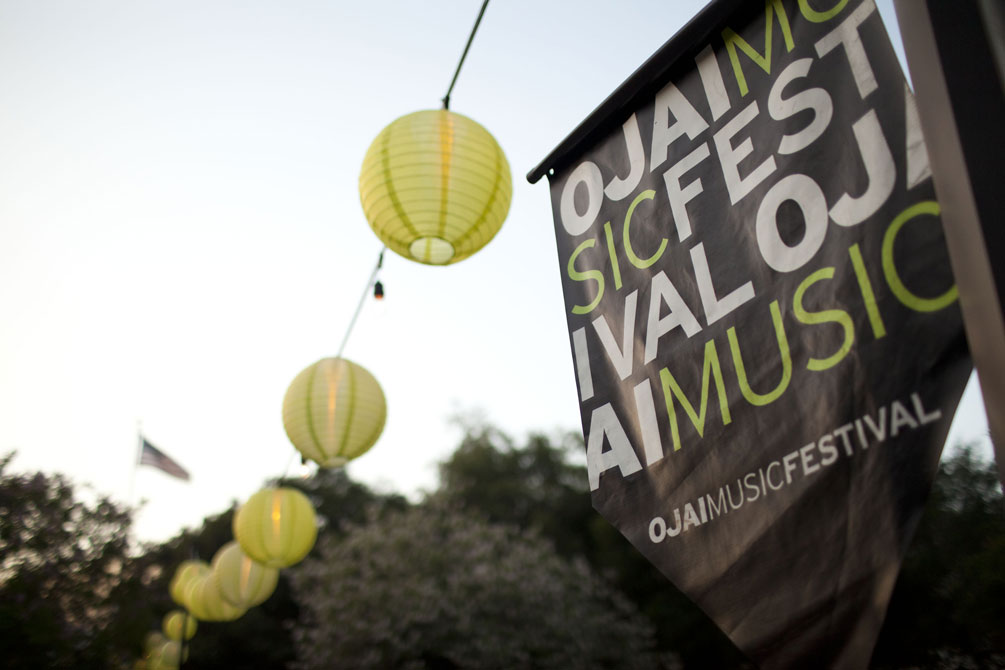
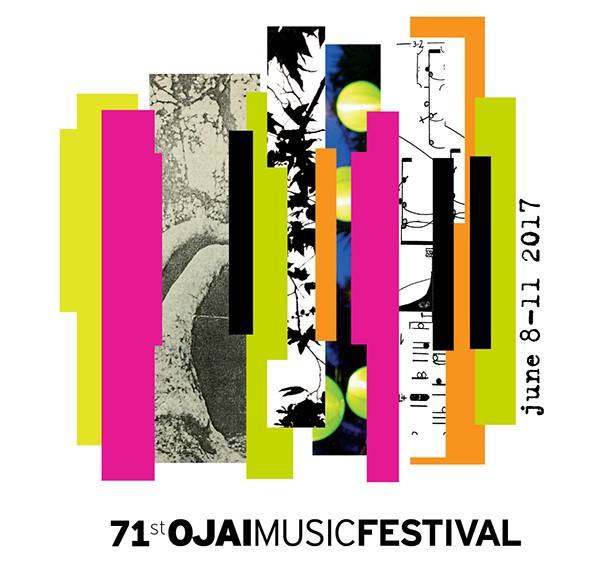
A Message from the Music Director
Thank you for joining us for these very special days and nights of music in Ojai. After two years of planning, we’ve somehow managed to gather dozens of my favorite artists: creative visionaries across generations, geographies, and histories, every one of them beyond category.
I am honored to be a featured composer and pianist throughout this Festival, but I’m even more pleased to report that it’s not all about me. You will find many other recurring themes over the weekend: improvisation and “real-time” music making; American experimentalism; radically inventive composer-performers; non-European musical systems; dialogue between the past and the present; collective struggles against racism and oppression; and central to all of this, the legacy of the Association for the Advancement of Creative Musicians (AACM).
You will recognize some performers and composers from past Festivals (Aruna Sairam, Tyshawn Sorey, Steven Schick, George Lewis, ICE), and you will meet others whose sounds are new to Ojai (Jen Shyu, Courtney Bryan, and myself). You will meet legendary elders (Zakir Hussain, Muhal Richard Abrams, and Roscoe Mitchell) and younger upstarts (Steve Lehman, Rudresh Mahanthappa, and Cory Smythe). You will hear state-of-the-art interpreters (Jennifer Koh, Brentano Quartet, Claire Chase, and Helga Davis) and wizardly real-time creators (Graham Haynes, Wadada Leo Smith, Nicole Mitchell, and Mark Shim). You will hear music as object—composed opuses, whether finished centuries ago or with ink still fresh—and you will hear music as process—the sonic choices of networks of actors moving in relation to each other and to their environment. And you might notice that—to some degree, every musical performance contains both of these elements.
By now you’ve probably heard or read my suggestion that we should replace the word “genre” with “community”—a very different word, concerned not with styles, but with people. I realize that the latter has become a no-less-hackneyed term, wishful and forced, invoked too often. With this distinction I only meant to point out a simple truth about music: In listening to each other, we become connected. When done with patience and compassion, listening can elicit recognition of the other as a version of one’s own self. This kind of empathic listening shakes us out of our habitual role as musical “consumers,” by reminding us that music is the sound of human action, and not a disembodied substance. It de-centers “the composer” as the primary actor in music, and reorients us instead towards the shared present: being together in time. Empathic listening begins to bring all of us in, music makers and observers alike, towards a shared purpose.
Here we find common cause with Judith Butler’s Notes Toward a Performative Theory of Assembly, her recent far-reaching meditations on the politics inherent in the act of gathering. When we, as assembled bodies, are able to theorize a common purpose—to reflect upon ourselves, or to dream together, if you prefer—that is the moment that we become political; that is when we are first able to unite around something larger than the self, deeper than aesthetic enjoyment, more urgent than mere curiosity. In this sense, I would add, the moment we commit to empathetic listening, to hearing one another as fellow human beings, we immediately have the potential for not just community, but equality and justice, through direct action and collective transformation. And I am certain that such moments, such purposeful shared presence—a power stronger than itself—will emerge, here, this weekend, with and among each other.
So I thank you, once again, for assembling, and for listening.
VIJAY IYER
Click here to read the 2017 Ojai Music Festival Program Notes
Update from Artistic Director Tom Morris about Afterword
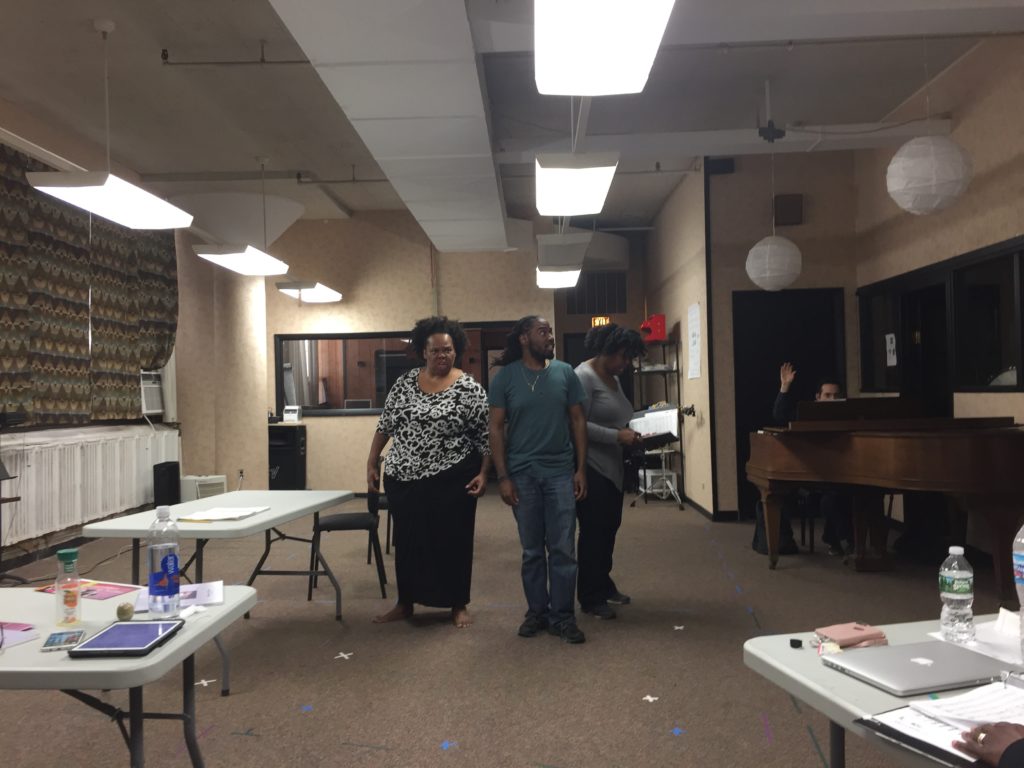
Dear friends:
Musical preparations resumed for the 2017 Ojai Music Festival in Chicago over the past two days with staging rehearsals with our three wonderful singers – Joelle Lamarre, Gwendolyn Brown, and Julian Otis – for George Lewis’ Afterword. The opera, which receives its West Coast Premiere in Ojai on Friday June 9, tells the story of the Association for the Advancement of Creative Musicians (the “AACM”) in poetically allegorical form. Rather than assign a large cast of singers to play specific characters in the AACM’s history, George Lewis ingeniously gave three vocalists the task of expressing the ideas that inspired the emergence of the organization. The opera also includes an ensemble of eight musicians from ICE conducted by Steven Schick.
The staging rehearsals were directed by Sean Griffin, our stage director, ably assisted by Narda Alcorn, our production stage manager. Sean, Narda, and the three singers were all involved in the three previous performances of the opera in fall of 2015 in Chicago, Poland, and England, so they have lived with the work.
The Ojai and Berkeley performances will be semi-staged with a simply stylized set. It was remarkable in Chicago to see the story vividly come to life through these three singers who each deeply inhabit the roles. The music is fierce and powerful, befitting the subject. I was overwhelmed with the raw emotion of the story told as if it were being experienced in real time. We are in for a very emotional evening.
The AACM is a common thread throughout this year’s festival. Vijay Iyer traces much of his music through the group and its members. Indeed, many of our artists and composers this year have active relationships with the organization – Wadada Leo Smith, Anthony Braxton, Tyshawn Sorey, Nicole Mitchell, Muhal Richard Abrams, Roscoe Mitchell, and of course George Lewis, who in addition to being a distinguished performer and composer and teacher, wrote the definitive biography of the AACM A Power Stronger than Itself: The AACM and American Experimental Music.
Preceding the performance of Afterword on Friday evening June 9 at 8pm will be a special Ojai Talks moderated by Ara Guzelimian on the Libbey Bowl stage at 7pm. The talk is entitled The AACM: Ongoing Impact. We are honored to have a distinguished panel of AACM founding members Muhal Richard Abrams, Roscoe Mitchell, as well as Tyshawn Sorey and Claire Chase. The evening will be a historic and moving opportunity to learn about, and experience through music, this remarkable chapter in the history of American music. On Sunday June 11 at 10am in the Libbey Bowl, Muhal Richard Abrams, Roscoe Mitchell and George Lewis unite as The Trio in a free and open-to-the-community performance. Not to be missed.
The power of these incredible artists and their music came vividly to life in Chicago these past few days. I look forward with great anticipation to two days of rehearsals with the full instrumental forces in New York May 22 and 23. And then onward to Ojai.
- Tom Morris, Artistic Director
Density & The Inner Spectrum of Variables
On Friday, June 9 at 1:00pm, the Ojai Music Festival features selections from Claire Chase’s ambitious Density 2036 project and Tyshawn Sorey Double Trio’s The Inner Spectrum of Variables.
Density 2036
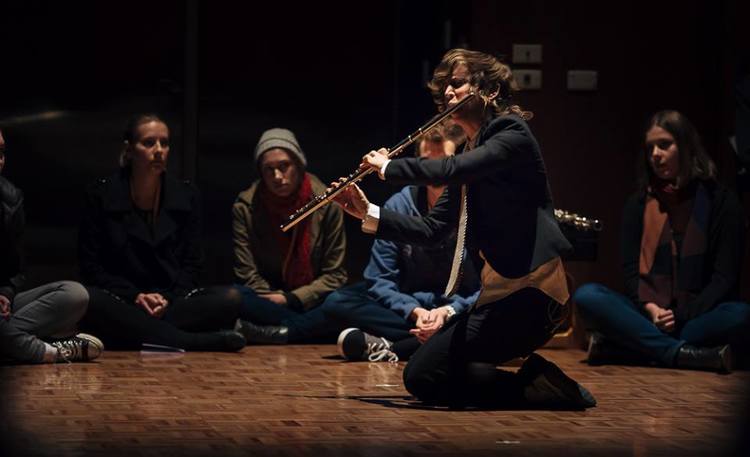
Here is an overview of the Density 2036 project, taken from Claire Chase’s website:
Density 2036 is a 22-year project begun by Claire Chase in 2014 to commission an entirely new body of repertory for solo flute each year until the 100th Anniversary of Edgard Varèse’s groundbreaking 1936 flute solo, Density 21.5. Each season between 2014-2036, Claire will premiere a new 60-minute program of solo flute work commissioned that year in a special performance at The Kitchen in New York City and on tour in select cities thereafter. Additionally, each cycle of works (Density 2014, Density 2015, Density 2020, etc) will be released in their world premiere recordings annually, and scores, performance notes and materials be made available digitally as educational resources for flutists everywhere.
Every three years of the cycle (Density 2016, Density 2019, etc) a retrospective event will be held in which Claire will perform cumulative concerts of all Density work commissioned up until that date. In 2036, a 24-hour marathon will take place.
Chase just won the Avery Fisher Prize, which is awarded every few years to recognize musical excellence, vision and leadership. Read this New York Times article for more information on Density 2036 and this exciting announcement.
On Friday Afternoon, Chase begins her performance with Edgard Varèse’s Density 21.5, the 1936 solo mentioned above. In this concert, she will play pieces composed by Ojai artists, including Tyshawn Sorey’s Bertha’s Lair and Vijay Iyer’s Flute Goals for tape. Chase’s performance will also feature… you! We are seeking patrons who would like to participate in Marcos Balter’s Pan. No musical training or experience is necessary! Participants will play tuned wine glasses, ocarinas, chimes, triangles, and other small handheld percussion instruments.
The rehearsal will take place Thursday, June 8 from 3:15 to 4:00. This means that participants will not be able to attend the Thursday Ojai Talks.
If you’d like to perform or request more information about Pan, please contact [email protected]
The Inner Spectrum of Variables
From the liner notes of The Inner Spectrum of Variables CD:
Composed in 2015, The Inner Spectrum of Variables is an extended composition that deals with variables in improvisation and structure, the main ingredients that make each performance unique. The work draws from a breadth of influences, considers diversity in improvisational approach (e.g., open, modal, gestural, conducted, prescribed, relational), and structurally deals with multiple harmonic, formal, and rhythmic strategies. Inspired largely by the work of improviser-composers Butch Morris, Harold Budd, and Anthony Braxton, as well as Ethiopian modal jazz, klezmer, and Western art music traditions, Variables is a highly flexible score that can be performed in a myriad of ways. The version heard on this recording employs conducted improvisation (the score contains a lexicon of visual cues for the conductor to use at any point during a given performance to enable real-time improvisation), but the work can also be realized with the performers following prescribed directives for improvisation or without any improvisation at all. I hope that you will enjoy the experience, and I thank you for listening.
- Tyshawn Sorey
Considering the piece’s flexibility, the performance on Friday will have a unique character, operating differently from the recording.
Sorey, who made his Festival debut in 2016, is an accomplished composer, drummer, pianist, improviser, trombonist, and more. Among his features in the upcoming Festival, we are excited about Conduction – an “improvised duet for ensemble and conductor”, which was developed by Butch Morris. The ensemble responds to the conductor’s signals and gestures, creating a new piece of music in real time. Conduction will be a part of the Saturday Afternoon Concert.
A letter from Artistic Director Tom Morris
Dear Friends:
It is hard to believe that the 2017 Ojai Music Festival is only seven weeks away.
My excitement really began to build three weeks ago at the Oberlin Conservatory of Music, which has produced so many outstanding Festival artists. The Oberlin Contemporary Music Ensemble and Oberlin graduate Jennifer Koh will make their Ojai Music Festival debuts on June 8 for the world premiere Vijay Iyer’s violin concerto Trouble (the Ojai Music Festival, Cal performances in Berkeley, and the Boston Symphony at Tanglewood commissioned the work). Workshops of new pieces are a marvelous way for the composer and performers to work out any changes or modifications. We last did this with Jeremy Dank/Steven Stucky’s The Classical Style in 2014. In preparation for the world premiere of Trouble, Oberlin graciously produced an intense week of workshops conducted by Tim Weiss. Vijay himself was present for most of the week, and we were treated to two workshop performances, the first in Oberlin on April 7, and later at the Cleveland Museum of Art on April 9. Both times, audiences cheered the evolving concerto. The piece is fiendishly difficult but extremely moving and powerful. Jenny Koh was masterful.
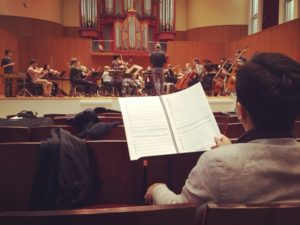
Continuing our partnership with Oberlin, nine string members of the Oberlin Contemporary Music Ensemble will join ICE in Trouble, Vijay’s Emergence for Ensemble and Trio, and Courtney Bryan’s Yet Unheard.
Last week, I witnessed another stunning event. When Vijay and I began planning the Festival two years ago, he said very early on that he had always wanted to work with Indian singer Aruna Sairam (who was in Ojai last year), and master tabla player Zakir Hussain. I love challenges like this so we put an event together for Sunday, June 11 at 1pm featuring these three artists plus the incredible saxophonist and longtime Iyer collaborator Rudresh Mahanthappa. Since the initial idea, Vijay worked once in Banff with Zakir and also with Aruna, but these four master musicians have never performed together – Zakir and Aruna have never collaborated. It turned out all were available for a rehearsal in New York on April 11 in a small studio on 46th Street. I was lucky to be present and witnessed music history being born. The sheer artistry and energy of these four was incredible, and watching them construct a new musical program for Ojai was thrilling. One of the astonishing things about great artists is how little they have to talk, since their shared artistry communicates on such an instinctive, natural level. The Festival concert on June 11 is not to be missed as they publically perform together for the first time. All have stated unequivocally that this will not the be the last time they work together. Based on what I witnessed, the future for this group is bright indeed.
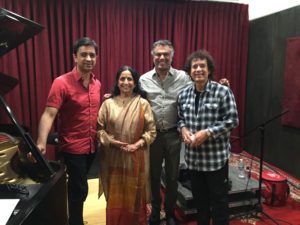
Finally, as part of our partnership, WQXR/Q2 in New York presented a public performance in The Greene Space on April 13. The space was packed, and the event was streamed live. Featured were conversations and performances by Vijay Iyer, Jennifer Koh, George Lewis, Tyshawn Sorey, and Rudresh Mahanthappa. The event was hosted by Q2’s Helga Davis, who herself will be soprano soloist in Ojai this year in Courtney Bryan’s Yet Unheard. The program gives a very good preview of the artistry and collaborative energy of these wonderful artists. You can view the event below:
Three weeks and counting – we are in for a great treat.
- Tom Morris, Artistic Director
